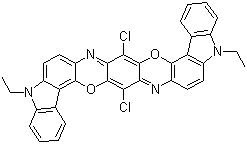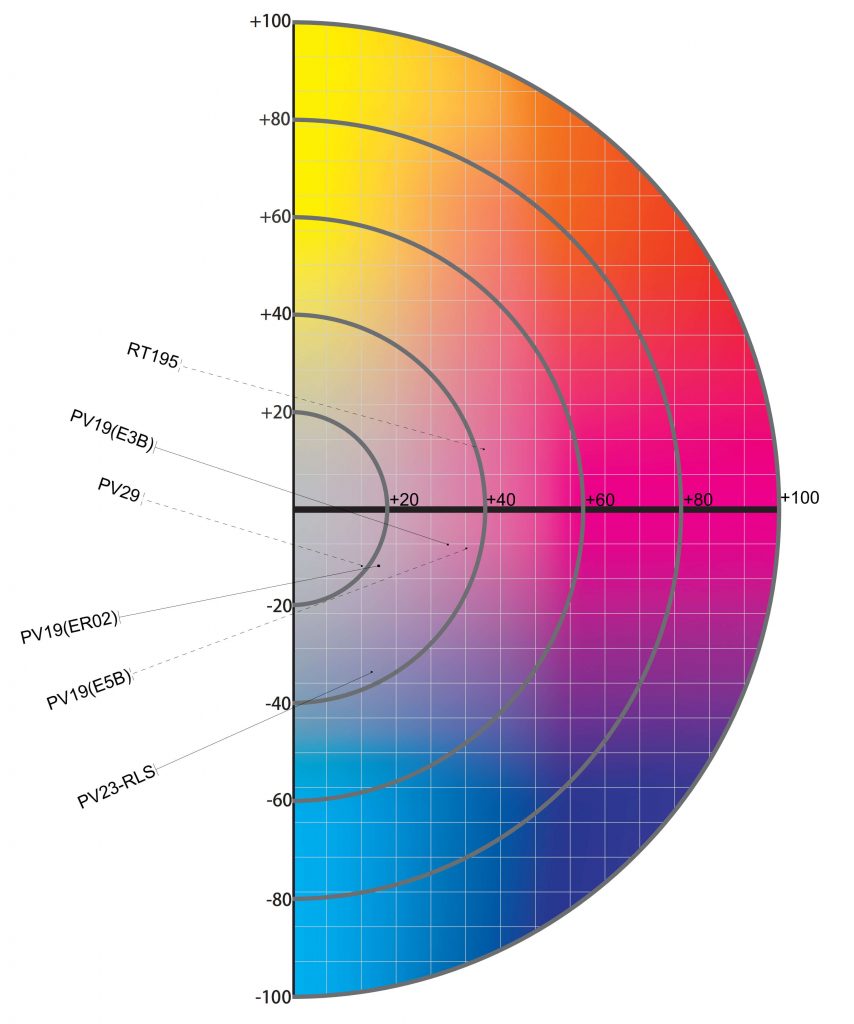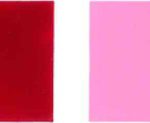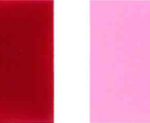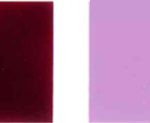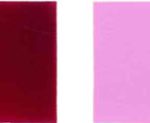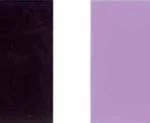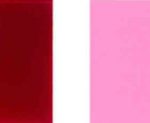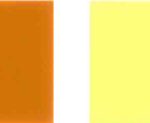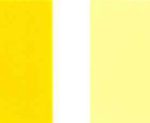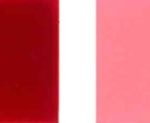Pigment violet 23-Corimax Violet RLS
Le pigment violet 23 est un composé organique qui est un pigment commercial. Il fait partie de la famille des composés hétérocycliques des dioxazines, mais dérive des carbazoles. Il est préparé par condensation de chloranil et de 3-amino-N-éthylcarbazole. Il a une structure angulaire centrosymétrique. Pendant de nombreuses années, la structure a été attribuée, à tort, à une « structure linéaire » (n° CE 228-767-9, n° CAS 6358-30-1) qui différait en termes de fusion du cycle carbazole.
Le pigment violet 23 est préparé par condensation d'une aniline avec du chloranil.[À partir du wiki]
Paramètres techniques du Pigment violet 23
| Indice de couleur | Pigment violet 23 |
| Nom du produit | Corimax Violet RLS |
| Catégorie de produit | Pigment organique |
| Résistance à la lumière (revêtement) | 7 |
| Résistance thermique (revêtement) | 200 |
| Résistance à la lumière (plastique) | 7 |
| Résistance thermique (plastique) | 250 |
Couleur | 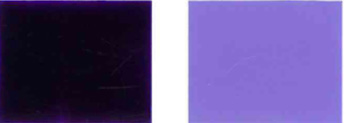 |
| Teinte distribution |
Zeyachem est un fournisseur mondial de pigments Dioxazine Violet qui fournissent une teinte violet bleuâtre, une couleur que d'autres pigments ne peuvent pas obtenir.
La force de couleur extrêmement élevée du Pigment violet 23 en fait un pigment approprié comme composant d'ombrage. Le PV23 présente également d’excellentes propriétés de résistance à la chaleur et à la lumière, ce qui le rend adapté aux encres et à de nombreuses applications de peintures et de revêtements.
Corimax Violet RLS est un pigment violet de dioxazine (PV23) de teinte bleu rougeâtre avec une force de couleur très élevée et d'excellentes propriétés de solidité globales, adapté aux encres, peintures et revêtements, y compris les revêtements industriels, les revêtements en poudre et les revêtements automobiles.
Fonctionnalités:
faible viscosité, haute brillance, haute résistance de la couleur. Le Pigment Violet 23 est un pigment violet violet transparent à haute saturation et pouvoir colorant.
Les CIPigment Violet 23 présentent un bon pouvoir colorant dans le PVC souple mais une mauvaise résistance à l'immigration.
Résistance thermique PV23 supérieure à 230 ℃ dans les polyoléfines, lorsqu'elle est utilisée dans du PS transparent, la température doit être inférieure à 220 ℃, au-dessus de cette valeur, le PV 23 doit se décomposer. Lorsqu'il est travaillé en polyester, il est stable à 280 ℃ en 5 heures, tandis que la concentration doit être supérieure à 0,05 %.
Le pigment est facile à utiliser et ne nécessite aucun rinçage. Pour garantir une intensité de couleur maximale et une bonne adhésion à la pulpe, un agent de rétention doit être ajouté à la pulpe avant l'application du pigment. Nos pigments sont fournis par volumes. Le poids réel varie en fonction de la densité du pigment.
Application:
Recommandé pour les peintures automobiles, les revêtements architecturaux, les revêtements pour bobines, les peintures industrielles, les revêtements en poudre, les pâtes d'impression, PVC, caoutchouc, PS, PP, PE, PU, encres offset, encres à base d'eau, encres à base de solvant, encres UV.
Le Pigment Violet 23 (PV 23) existe depuis plus de 55 ans. Ses débuts remontent à 1928, lorsqu'un brevet a été déposé pour ce pigment après que des chercheurs de la société Hoechst en Allemagne ont entrepris pour la première fois une synthèse en plusieurs étapes à base de carbazole, un ingrédient du goudron de houille, et de chloranile. Jusqu'à la fin de la Seconde Guerre mondiale, le pigment n'était utilisé que pour transformer le bleu clair diamine, un colorant direct pour le coton.
Avec l’invention des colorants réactifs, qui simplifiaient considérablement le processus de teinture et d’impression des fibres cellulosiques, cette application perdit de son importance. Une nouvelle utilisation prometteuse du PV 23 a été rapidement trouvée grâce à la capacité du pigment à produire des couleurs uniques.
Le PV 23 est utilisé comme pigment depuis 1953. Le PV 23 appartient au groupe des pigments polycycliques de haute performance (HPP) qui sont utilisés lorsque les exigences en matière de colorant sont particulièrement élevées. Ceux-ci incluent une solidité élevée à la lumière et aux intempéries, une solidité aux solvants et une stabilité thermique. De plus, le PV 23 se démarque par son haut pouvoir colorant. Au microscope électronique, le violet brut présente une forme cristalline très granuleuse, tandis que les particules de pigment sont minuscules.
——————————————————————————————————————————————————— ————————————————
Informations connexes
Proprietes physiques et chimiques:
Teinte ou lumière: bleu violet
Densité relative: 1,40-1,60
Densité apparente / (lb / gal): 11,7-13,3
Point de fusion / ℃: 430-455
Taille moyenne des particules / μm: 0,04-0,07
Forme des particules: cubique / tige
Surface spécifique / (m2 / g): 45-102
Valeur pH / (suspension 10%): 6,2
Utilisation du produit:Le pigment violet 23 est principalement utilisé pour la coloration des revêtements, des encres, des caoutchoucs et des plastiques, ainsi que pour la coloration des fibres synthétiques
Il existe 124 types de marques de formulation commerciale du pigment. La carbazoazine est une sorte de variété bleu violet avec une application forte et inhabituelle, et la surface spécifique du violet monolite RN est de 74 m2 / g. Il est largement utilisé dans divers domaines tels que le revêtement, l'impression à l'encre, l'impression et la teinture de plastique et de tissu. Il a une bonne solidité au vernis lors de la coloration. Il peut être utilisé pour la peinture de séchage à l'air, la peinture automobile OEM et la peinture de cuisson, en particulier pour la peinture au latex avec du toner CuPc et un fort ton clair. Il peut être utilisé pour la coloration plastique, avec une résistance à la chaleur de 280 ℃ dans la polyoléfine et une rétention de couleur élevée (seulement 0,07% de la concentration en pigment est nécessaire pour le HDPE avec 1 / 3SD); il peut également être utilisé pour la coloration du polyester et du PE.
Principe de synthèse: Le carbazole est utilisé comme matière première, et la N-éthylation est effectuée sous pression normale en présence d'un catalyseur d'inversion de phase, et une réaction de nitration et une réaction de réduction sont effectuées pour synthétiser le 2-amino-N-éthylcarbazole; La 3,5,6-tétrachloroparaquinone (chloranil) est soumise à des réactions de condensation et de fermeture de cycle, filtrée, lavée à l'eau et séchée pour obtenir un violet de carbazole brut; enfin, traitement général de pigmentation par malaxage ou malaxage pour obtenir le pigment CI violet 23.
alias:Pigment Violet RL; 51319 ; CI Pigment Violet 23 ; 8,18-dichloro-5,15-diéthyl-5,15-dihydrodiindolo(3,2-b:3',2'-m)triphénodioxazine ; CI51319 ; Diindolo(3,2-b:3',2'-m-)triphénodioxazine, 8,18-dichloro-5,15-diéthyl-5,15-dihydro-; Violette de carbazole dioxazine ; Violette de carbazole ; Chromofine Violet RE; Violette de Cyanadur ; violette de dioxazine ; Pourpre de dioxazine ; EBViolet 4B7906 ; CEM Violet RL 10 ; Fastogen Super Violet RN; Fastogen Super Violet RN-S ; Fastogen Super Violet RTS; Fastogen Super Violet RVS ; Hélio Fast Violet BN ; Héliofast Rouge Violet EE ; Violette héliogène ; Toner Héliogène Violet R ; Hostaperm Violet RL; Hostaperm Violet RL Spécial ; Hostaperm Violet RL Spécial 14-4007 ; Lac Fast Violet RL; Lac Fast Violet RLB; Violette lionogène R 6100 ; Violette lionogène RL ; Lionol Violet HR; Monolite Rapide Violet R; PV Violet rapide BL ; PV Violet Rapide RL-SPE ; Violette paliogène 5890 ; Violette paliogène L 5890 ; Violette permanente ; Violet permanent R ; Sandorine Violet BL; Sanyo Violet permanent BL-D 422 ; Sumikacoat Fast Violet RSB; Sumitone Fast Violet RL; Sumitone Rapide Violet RL 4R; Sumitone Fast Violet RLS ; Symuler Fast Violet BBL; Symuler Fast Violet BBLN; Unisperse Violet BE; Violette de vinyle 2B ; 8,18-dichloro-5,15-diéthyl-5,15-dihydrodiindolo(3,2-b:3',2'-m)triphénodioxazine ; Diindolo(3,2-b:3',2'-m)triphénodioxazine, 8,18-dichloro-5,15-diéthyl-5,15-dihydro- ; 8,18-dichloro-5,15-diéthyl-5,15-dihydrocarbazolo[3',2':5,6][1,4]oxazino[2,3-b]indolo[2,3-i]phénoxazine
Structure moleculaire: